Mission Accomplished
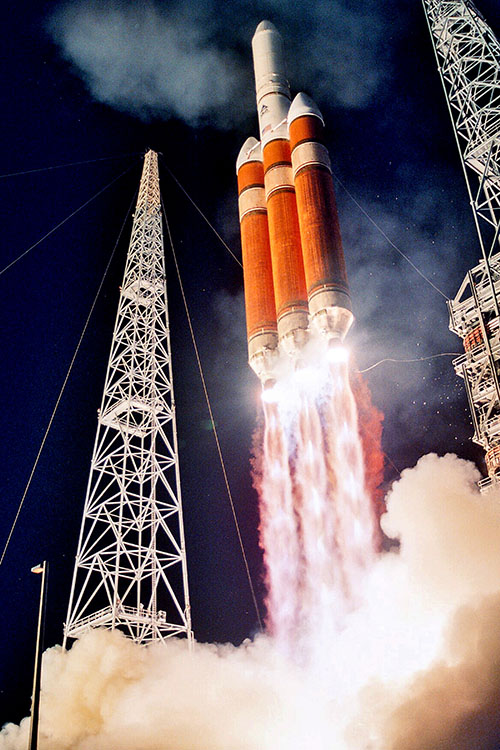
Photographer Carleton Bailie captures a mighty Delta’s power during a night launch. CARLETON BAILIE
NASA retires its biggest stars, the massive Delta rockets
In the drama-o-meter of rocket liftoffs, Deltas have scored way up there for more than 50 years. But the last of these most metal of rockets, launched by United Launch Alliance on April 9, ultimately provided as impressive a show as its predecessors — after a not insignificant delay kerfuffle. It was a fiery and fitting end to the 64-year run for the Delta family — not bad for a rocket NASA prosaically dubbed “an interim general-purpose vehicle … for communication, meteorological and scientific satellites, and lunar probes during 1960 and 1961.”
“They go way back to the beginning of the Space Age, and have a long history on the Space Coast,” said Dr. Don Platt, an associate professor of space systems at Florida Institute of Technology as well as the director of the university’s Spaceport Education Center. “It is definitely the end of an era.”
The Deltas also go way back in the lives of many Brevard residents, such as photographers Carleton Bailie and Lloyd Behrendt. Of the 389 Deltas launched since 1960, Bailie photographed 156, including the final Delta IV Heavy as well as six launches at Vandenberg Space Force Base in California. Behrendt — a true space brat — was only 18 months old when he experienced the 1950 launch of Bumper 8, the first rocket launched from Cape Canaveral, where his father was a weather officer. Behrendt would grow up to photograph hundreds of launches during his career as a professional photographer and would later transform the photos into art by hand painting the images with vintage photo oils.
For Bailie, seeing the rocket dragons thundering their ways into the skies never got old.
“It was all fire and brimstone,” he said. “It made a lot of noise, boosters flew, and it left a big trail.”
Launch photographers relished Delta assignments.
“Delta was absolutely my favorite,” Behrendt said. “I liked the Delta IIs best, because they were the real workhorse out at the Cape during the last 40 years — and we could get closer to the pad to photograph, which was a big deal, even with our telephoto lenses. The launches were more immediate.”
Bailie got even closer, thanks to a remote camera installed on the launch tower. “It was literally feet away from the rocket,” he said.
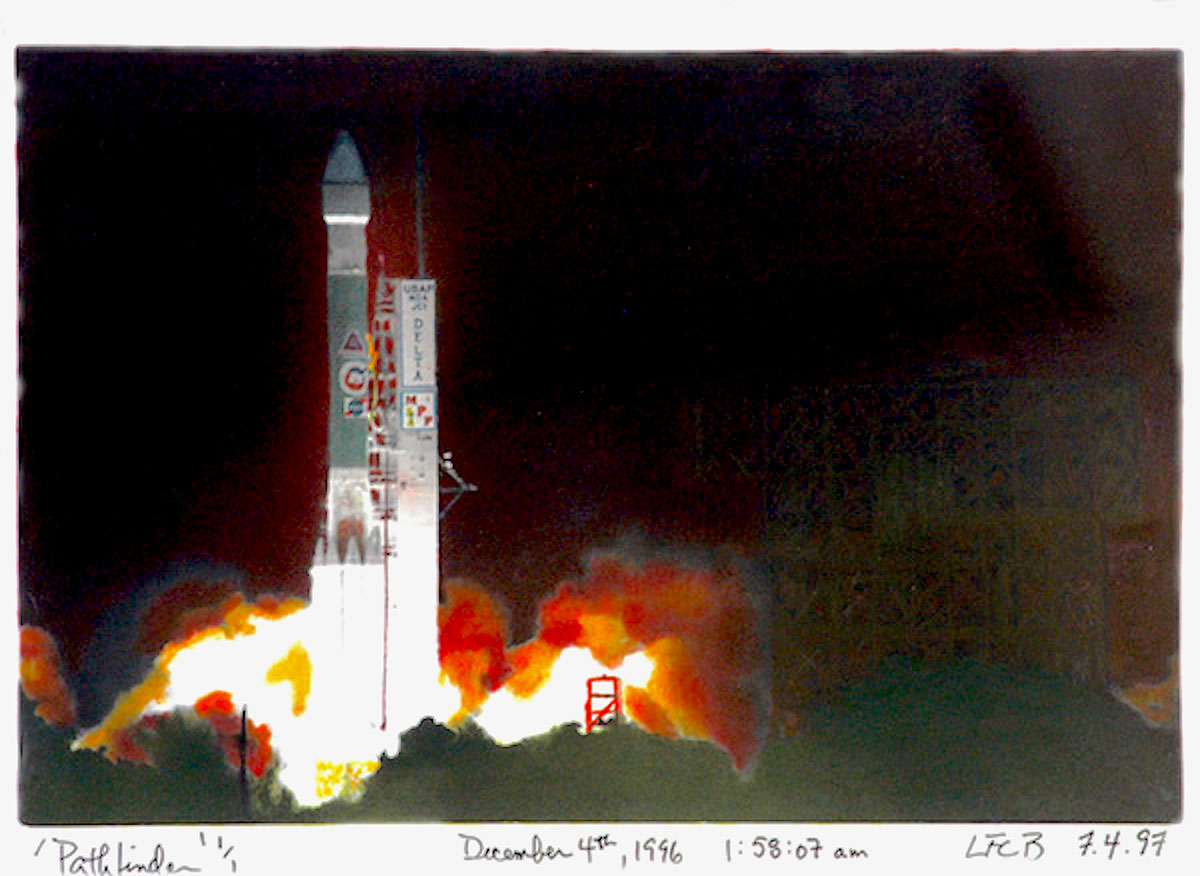
The night of Dec. 4, 1996, was a long one for Behrendt, who captured this 1:58:07 a.m. launch of the Delta II Mars Pathfinder, the first robotic rover. LLOYD BEHRENDT
REALLY BIG
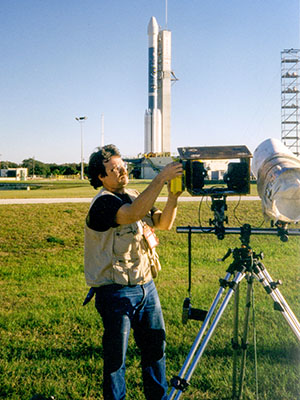
Carleton Bailie sets up shop to photograph a Delta launch. CARLETON BAILIE
At 232 feet tall, the last Delta IV Heavy was a very different and beefier animal than its earlier relatives, which stood at only 90 feet. Propelled by half a million gallons of propellent and more than 2 million pounds of thrust, these magnificent metal beasts would seemingly self-immolate upon liftoff, when the liquid hydrogen used to cool the engines appeared to set the rocket on fire as it rose from the launch pad. Fire and brimstone, indeed.
Just four minutes into the flight, the boosters were cast away, followed by the first stage less than two minutes later, leaving the single RL10C-2-1 Engine to propel the payload into space.
The last Delta was part of a secret National Reconnaissance Office mission, likely the deployment of a satellite into orbit. The majority of Delta IV Heavy launches were missions for the NRO, which is the Department of Defense agency tasked with surveillance from space.
“The mission will strengthen the NRO’s ability to provide a wide range of timely intelligence information to national decision makers, warfighters and intelligence analysts to protect the nation’s vital interests and support humanitarian efforts worldwide,” according to the United Launch Alliance’s mission statement for the last launch.
In addition to delivering the spy satellites that keep the country safe, the Deltas deserve our gratitude for showing us the way, literally. In addition to NASA science missions and weather satellites, past payloads have included GPS satellites.
“That’s the only reason I got a GPS for my 25-year-old Jeep,” Behrendt said.
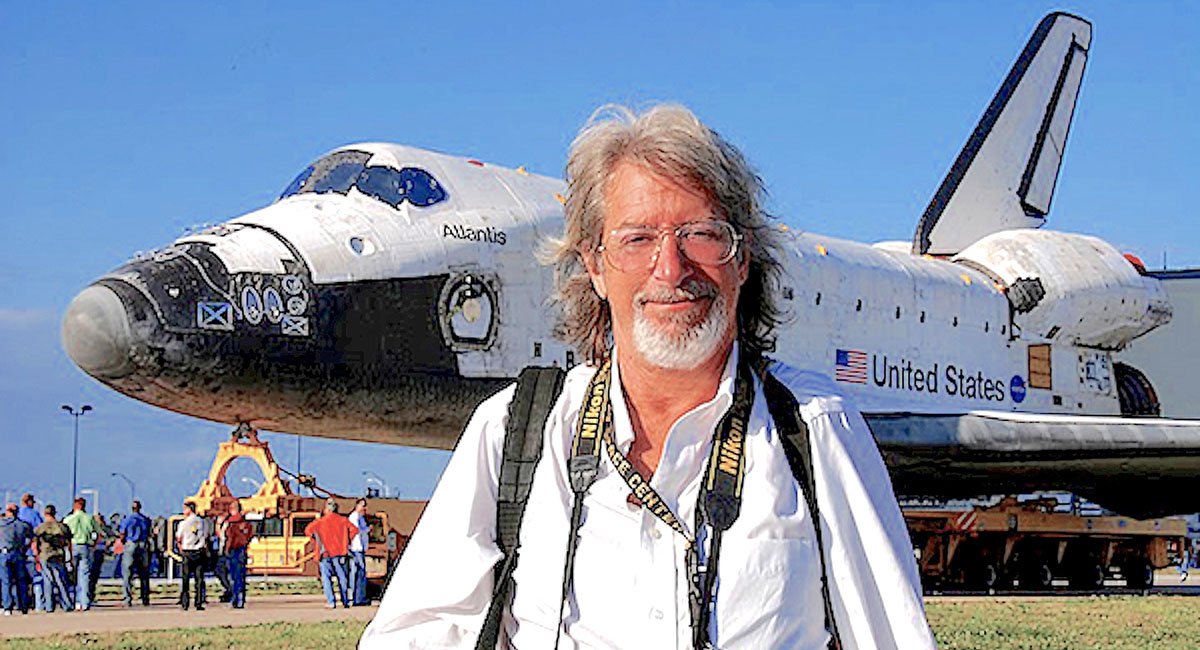
Photographer Lloyd Behrendt stands before the Atlantis Space Shuttle, one of the other famous metal birds he often photographed. JIM SIEGE
HISTORY
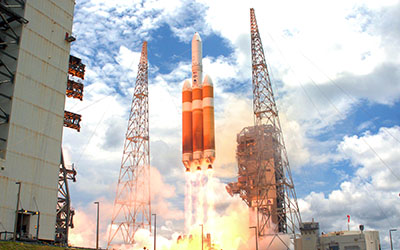
The Delta rocket never failed to put on quite the show. CARLETON BAILIE
A Delta IV Heavy was part of the first orbital test flight of the Orion crew capsule in 2014, delivering the unmanned capsule to an altitude of 3,600 miles — 14 times higher than the orbit of the International Space Station. Another Delta IV Heavy transported the NASA Parker Solar Probe in 2014 to learn more about space weather. The mission flew by Venus seven times and reached an orbit that brought it closer to the sun than Mercury.
The Delta’s reliability made it a go-to rocket for military reconnaissance missions. “For years, they used Deltas because they needed big satellites with big antennas and big cameras for communications and reconnaissance,” Platt said.
The development of smaller, cheaper satellites with the same, if not larger, capabilities ultimately sealed the fate for the Deltas. Like television sets and panty hose, these new satellites have short shelf lives.
“Satellites are now made to be replaced every few years,” Platt added.
Although Deltas were considered reliable rockets and launch successes, the 1970s variants had a tendency to explode in orbit, resulting in shrapnel clouds of space debris from these fragmentation events.
The Deltas are history, and soon the Atlas will follow. The Vulcan, which can transport both a human crew and payload, is now the future. The reusable Vulcan is also expected to dramatically pare down launch costs.
When Bailie aimed his camera to record the last of the Deltas, he said he experienced a flood of memories as the rocket roared into the firmament.
“I got to know them quite well,” he said. “It was like a family member leaving and knowing you will never see them again — that family member you are closest to and have known for over 30 years. Sure, other family members will take their place, but they might not be as dependable. It was very emotional.”

Maria Sonnenberg
Maria is a prolific writer and proofer for Space Coast Living and an adjunct professor at Florida Institute of Technology’s Nathan M. Bisk College of Business. When not writing, teaching or traveling, she can be found waging a one-woman war against her lawn and futilely attempting to maintain order among the chaos of a pack of extremely clueless wirehair dachshunds and an angst-driven basset hound.



